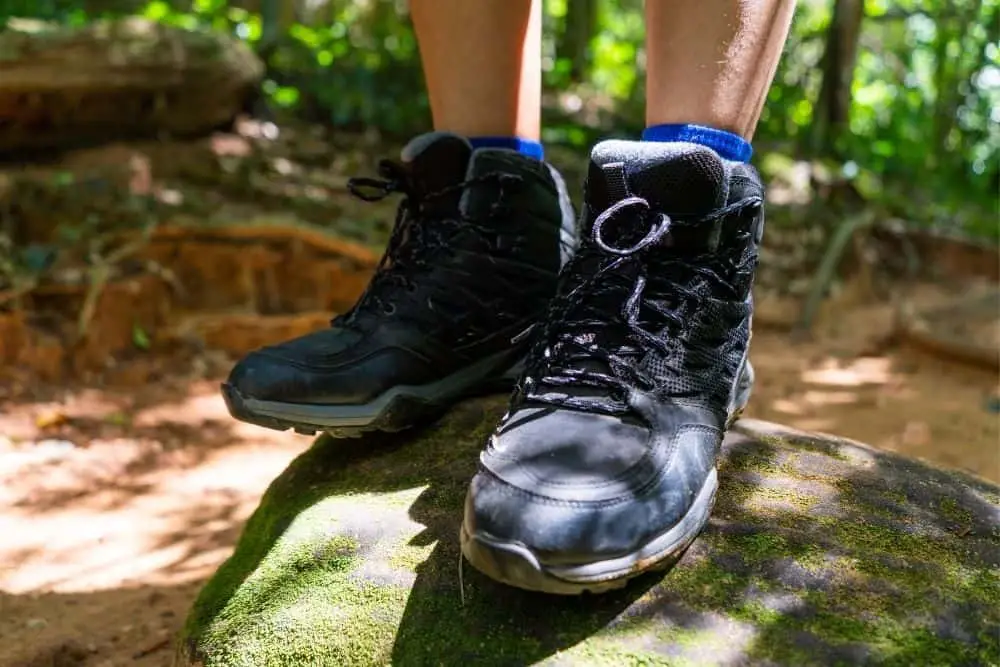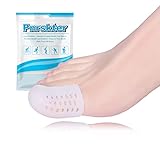One of the things hikers dread on the trail is blisters. Nobody wants to have to endure pain or discomfort in their hiking boots throughout their trip. Nor does anyone want to treat blisters after hiking for hours in harsh weather or terrain.
If you could do anything to prevent that, you would definitely want to do that. However, these things happen, and at different times, hikers get blisters on their hiking boots. And common reasons people have blisters in hiking boots include pressure, heat, moisture, and friction.
If any or all of these are present, then you have probably signed up for one of the most uncomfortable hiking trips you will ever be on. Pressure points, moisture, heat, or friction, can peel off your skin and leave you with bruises, which can get worse on or off the trail if you don’t tend to them quickly.
Even though blisters’ effects won’t last long, it is better to avoid and prevent them from happening initially. And there are ways for you to do that before you set out on the trail or when you are already out hiking.
Your feet carry your weight and move you from location to location when hiking, and you must care for them. Since this is the case, knowing how to prevent blisters from hiking boots is crucial, and we will help you with that. In this article, you will learn ways you can do that.
Let’s dive right in!
Contents
- How To Prevent Blisters From Hiking Boots?
- 1. Wear the right fit hiking boots
- 2. Break-in or stretch hiking boots
- 3. Tie them properly
- 4. Wear the right hiking socks
- 5. Wear toe cap protectors
- 6. Maintain dry feet
- 7. Prevent dirt from getting in hiking boots
- 8. Stop at intervals on the trail
- 9. Tend to hot spots immediately
- 10. Carry extra socks with you on the trail
- Conclusion
How To Prevent Blisters From Hiking Boots?
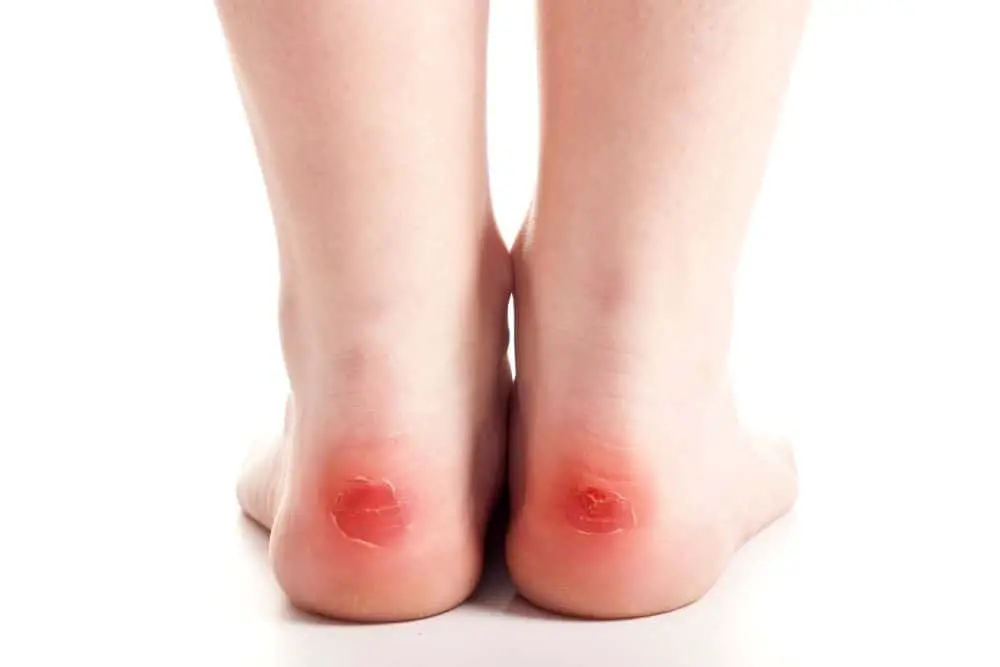
Blisters can form anywhere on your feet, from heels to toes. And this has become a common injury for hikers, among many others.
However, as long as you know how you can stop that from happening, you are good to go for a hitch-free hike. Of course, this involves a lot of things, and you should keep in mind that you have to pay attention to a lot of things, even the minutest details, when you are on the trail.
Some of the ways you can prevent blisters from your hiking boots can be easy or a bit tasking, but the most important thing is your foot health on the trail. You cannot afford to take chances with this.
So, what are the best ways to prevent blisters from hiking boots? You can try the following:
1. Wear the right fit hiking boots
Wearing hiking boots that fit properly around your feet is very important. Your hiking boots cannot be too big or small for your feet because that could cause many problems on the trail, not just blisters.
When you wear hiking boots that don’t fit snugly around your feet, you expose yourself to danger and pain on the trail. This is one of the solutions you have to try before you set off on the trail.
If you can get this right, you should not have any issues dealing with blisters on the trail. If that were to happen, it is not because of the size of your hiking boots.
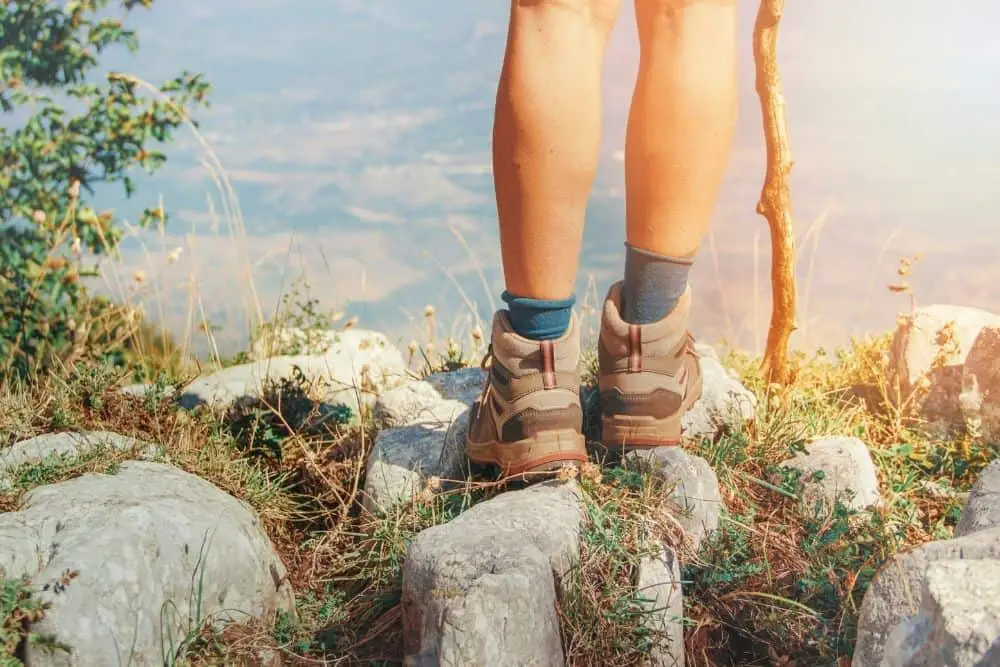
Unfortunately, one of the major mistakes people make when buying hiking boots is buying the wrong size. You can be sure of your shoe size before setting out to buy your boots and still end up with hiking boots that are too tight.
This is possible due to some factors. First, manufacturers size up their boots in different ways, and the size that may seem okay with one brand can be too big or small for your feet.
This is why you should try hiking boots on before leaving the store. Not just that, you should stand in them and walk around in them for a bit before you leave the store.
You should not forget to wear your hiking socks when trying the hiking boots. This is probably one of the reasons you should not buy hiking boots online, except, of course, the seller has a return policy.
Another option is to follow a common rule when buying hiking boots. This entails buying hiking boots that are probably one or one and a half size bigger than your regular shoe size.
But most importantly, ensure you try them on, and they are just the right fit for you on the trail. You will spend a lot of money to buy your hiking boots; you had better make them worth it anyways. You should not buy what will cause you pain or make you uncomfortable on the trail.
Pros
- Prevents blisters
- Keep feet healthy
- Safer for hiking
Cons
- Doesn’t totally eliminate blisters from forming in hiking boots.
- Getting the right fit hiking boots can be a bit stressful.
- May not be available in your favorite brand at the time of purchase.
2. Break-in or stretch hiking boots
Of course, you have gotten the right-fitting hiking boots for your hiking trips, but it does not end there. Like we mentioned earlier, it does not completely prevent blisters from happening, and this is because different factors contribute to blisters forming in hiking boots.
There could still be pressure points, and there is a possibility of heat and friction building up when on the trail. So after you have the right hiking boots, what next?
It is to be expected that new hiking boots will feel stiff around your feet, and sometimes it could be their materials. If your hiking boots are stiff, there will be hot spots or friction points that result in blisters if you don’t take other measures.
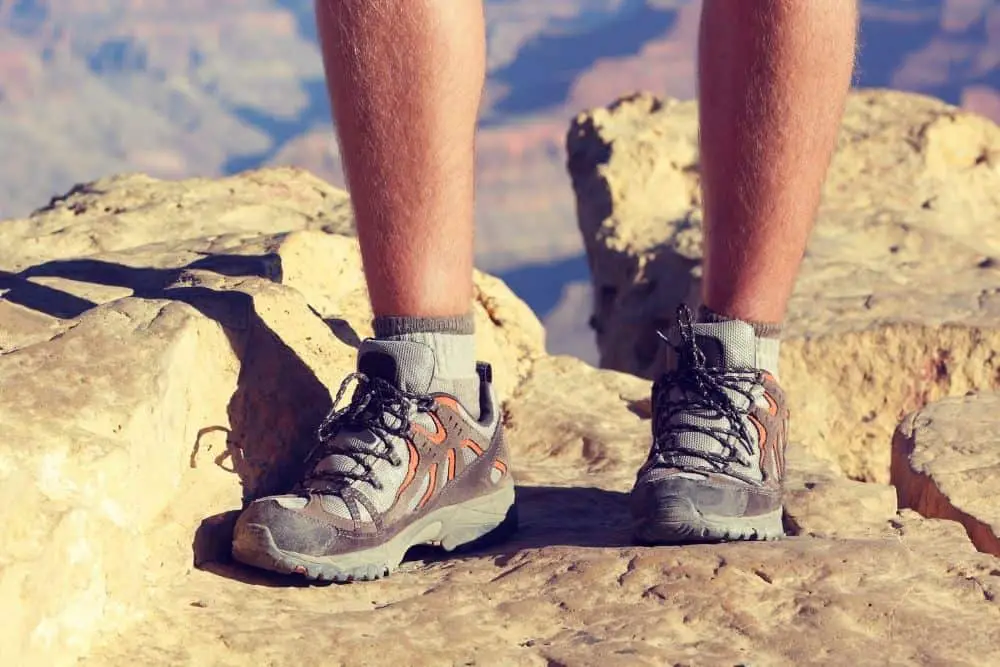
And one of the solutions to stiff hiking boots is breaking in or stretching hiking boots. This involves you expanding the material or softening it so they are gentler and freer on your feet.
There are different ways and methods to break in or stretch hiking boots. One way you can do that is to wear your hiking boots for a while till they stretch.
Eventually, whether you stretch or break in your boots, they will stretch because that is the nature of shoes. However, if that already causes you enough discomfort to the point of blisters or other foot problems, then you should find other means.
There are other ways to break in hiking boots or stretch them, and some of them include using a boot stretcher, using essential oils, stuffing your hiking boots, softening them with heat, stretching the toe cap, and more.
However, breaking in or stretching your hiking boots can be tricky, and some people end up ruining their hiking boots in the process. In a bid to break in and stretch hiking boots quickly, some people end up ruining their hiking boots.
This is why you must be careful and choose the safest ways to break in or stretch your hiking boots. You must also keep in mind that your hiking boots’ softening or expanding is not immediate.
Sometimes, you have to try some of these methods a couple of times before seeing results. But the most important thing is that doing this will help you reduce the chances of blisters forming in your hiking boots.
And more than that, you will be comfortable all throughout your hiking trip.
Pros
- Keeps blisters at bay
- Make boots fit more properly
- Improves comfort in boots
Cons
- Results may not be immediate.
- Some breaking-in or stretching methods can be uncomfortable.
- Does not completely prevent blisters from hiking boots.
3. Tie them properly
The way you lace your hiking boots contributes one way or the other to comfort on the trail, as well as preventing blisters. You may be wondering what the big issue of tying hiking boots is all about when you have probably been tying shoelaces most of your life.
There are ways you can tie your boots when it comes to hiking, and there are special ways to tie hiking boots to prevent blisters. For example, you can try the Surgeon’s knot, two-zone lacing, heel-lock, window, or toe relief lacing.
You can tie these lacing techniques based on the hot spots in your hiking boots. For instance, if your toes hurt in your hiking boots, then you should probably try the toe relief lacing technique.
Sometimes, it could be that your heels move freely in your boots, so you know you have to lock them in place with the heel-lock technique. At this point, we should mention that you may need to switch up your lacing techniques at intervals.
Why? When on the trail, your feet’ size increases due to the exercise they go through. Therefore, it is likely that your feet will swell in your hiking boots.
When that happens, friction points can change, so you would need to lace your boots to fit that, so you can feel comfortable and blisters don’t form. Therefore, you should listen to your feet and stop at intervals to lace your hiking boots.
For your reference, we have an exclusive article on how to tie hiking boots to prevent blisters here.
Pro
- Pretty easy to do.
Con
- Can slow you down on the trail.
4. Wear the right hiking socks
Like your hiking boots, the socks you wear for a hike are also important. So, first, you should know that they are very different from your regular everyday socks.
You should not wear your regular socks in your hiking boots and expect that all will be well on the trail. Even though there is a chance of that happening, you should not gamble with it.
Wearing the right socks for hiking entails choosing socks that are breathable, moisture-wicking, soft on your skin, and match the weather in which you wear them. If the socks you choose are lacking in any of those areas, you may have an uncomfortable hike.
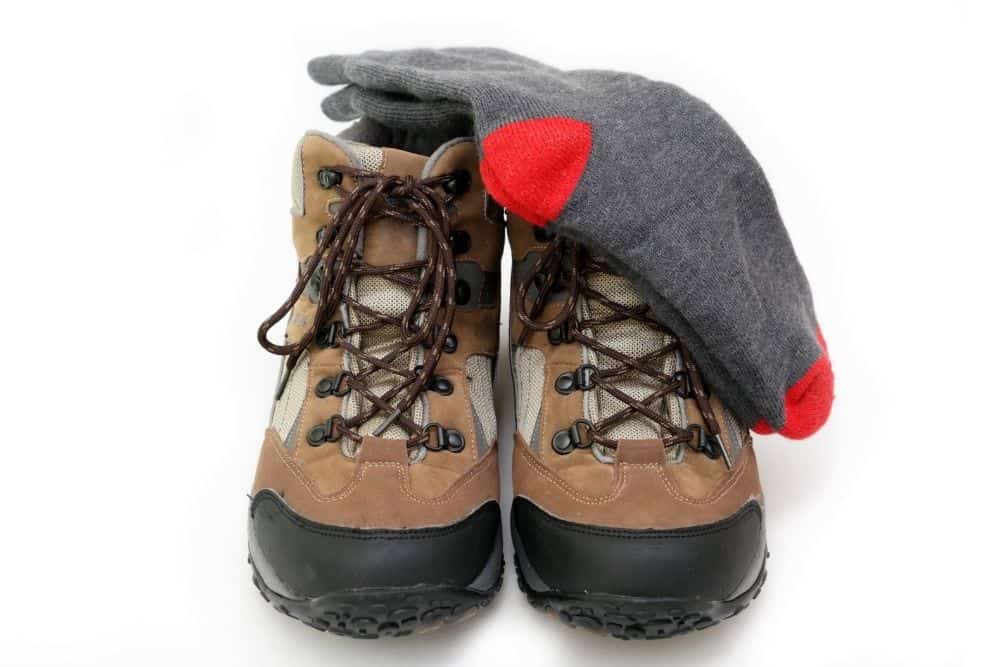
For example, you should wear thick socks when going on longer hikes so there can be less friction and a reduced chance of blisters forming in your hiking boots. You should probably also consider wearing a sock liner with your hiking boots.
This helps add an extra layer of protection for your skin and helps prevent blisters from forming. The good thing is that thick and soft socks are comfortable and can also help stretch hiking boots.
As we said, you should consider the weather as well. So, if it is hot outside, you should not wear cotton socks because if you sweat, they will absorb moisture and make you uncomfortable and give room for blisters.
- QUALITY AND SUPPORTS-- MIRMARU brings you another sock gem, this time in the superior-quality,...
- MULTI PERFORMANCE -- Embrace comfort, increase performance and protect feet from shear aching...
- WARM & COMFORTABLE -- Your toes and feet will say “thank you”. Being twice as thick as other...
Last update on 2023-11-11 / Affiliate links / Images from Amazon Product Advertising API
Pros
- The right socks are moisture-wicking and keep dry feet during a hike.
- Can break in hiking boots on the go.
- Prevents blisters from forming in hiking boots
Con
- A bit uncomfortable, especially when hiking boots are tight.
5. Wear toe cap protectors
- SOFT & COMFORTABLE GEL MATERIAL - Made of Durable,High Quality medical-grade Gel. Gel is Enriched...
- PROVIDES INSTANT RELIEF - Cushioning Gel Protects Sore Bunions, Blisters, Rubbing, Toenail Loss and...
- NEW BREATHABLE DESIGN - The traditional toe cover is airtight and easy to sweat, our newly designed...
Last update on 2023-11-11 / Affiliate links / Images from Amazon Product Advertising API
One common hot spot hikers experience is their toe areas. When hiking boots are new and stiff, your toes hurt sometimes.
Sometimes, it could be when you are hiking downhill and your toes are likely to shift forward and hit the front of your hiking boots. This can lead to pain or serious discomfort. It could also be that your toes rub against each other in your boots.
You can reduce the impact your toes feel when they hit your hiking boots by wearing toe cap protectors in your hiking boots. Not just that, toe cap protectors help prevent your toes from rubbing together and causing blisters.
The good thing about toe cap protectors is that they are comfortable around the toes and don’t make your toes sweat. If toe caps are not available, you can use tape to protect your toes in your hiking boots.
The difference is that tapes have adhesives, and not every skin type appreciates them. But, generally, toe protectors help to prevent your toes from rubbing in hiking boots, and you can be sure to maintain happy toes in your hiking boots.
Pros
- Protect your toes.
- Highly comfortable.
- Helps to keep blisters at bay.
Con
- Can make your feet sweat during summer.
6. Maintain dry feet
One of the causes of blisters on the trail is moisture. Many things are responsible for the moisture when hiking.
It could be sweat, rain, or wet terrain. When your feet become or stay wet in your hiking boots, you are prone to blisters. However, this is not just about your feet, but socks and hiking boots as well.
This is why you need to wear waterproof and breathable hiking boots. If your hiking boots are waterproof, then moisture from outside, such as rain, snow, or wet terrain, will not get into your hiking boots.
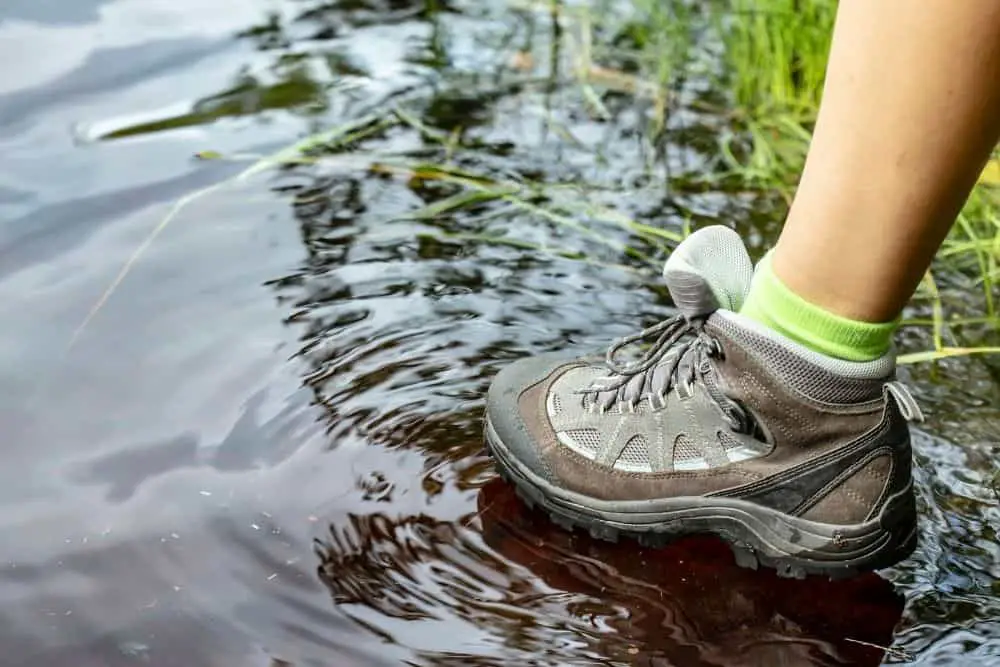
Then, you can hike comfortably in your hiking boots. Likewise, they have to be breathable because of when you hike during the summer. If they are not, your feet will most likely sweat.
If you can afford them, you should probably consider getting hiking boots for summer and winter to prevent moisture in both scenarios. In addition, you should wear breathable, moisture-wicking socks that won’t make your feet wet on the trail.
It is a big plus if they are fast-drying. You should refer to what we discussed about picking the right socks for hiking if you want to enjoy hiking blister-free.
Finally, to keep your feet dry, you may need to stop at intervals on the trail to unlace your hiking boots, take off your socks, and just let your feet breathe. Not only will that help keep your feet dry, but it also relaxes your feet from the rigorous activity.
Pros
- Reduces friction in hiking boots
- Makes feet comfortable in boots.
Cons
- Buying more than one pair of hiking boots can be expensive.
- Can be a bit tough, especially during unforeseen circumstances.
7. Prevent dirt from getting in hiking boots
Most hiking trails have sand on them, and if you hike on some rough terrain, you are likely to walk on tiny rocks or stones. Sometimes, these things can get into your hiking boots and cause blisters.
Tiny stones, sand, and grime in your boots coupled with your foot movement can lead to serious pain that can make you really uncomfortable. Imagine how uncomfortable it can be to walk with sand in your boot, not to mention that they could scratch your skin in the process.
So, you would need to wear hiking boots to help prevent this from happening. You might probably not want to wear hiking boots with holes or tiny openings in them.
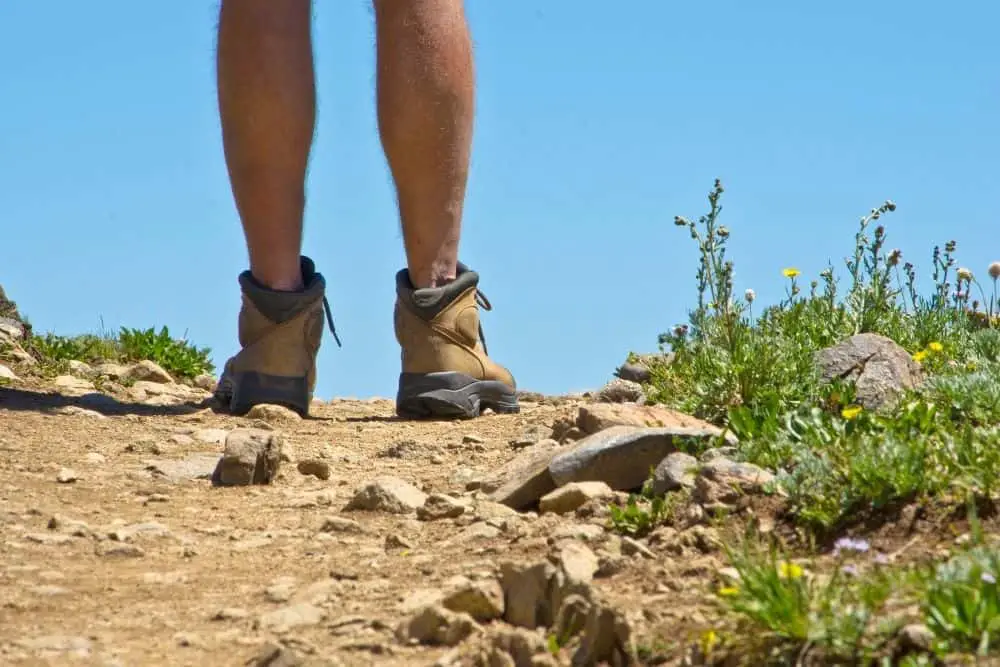
This will also cause moisture to get into your boots. High-cut hiking boots can also help to keep grime and dirt at bay. However, if it does make its way into your hiking boots, you should ensure you remove them as soon as possible.
For example, if your socks have dirt on them, you should immediately take off your boots and shake them off, and probably change your socks. If they are in your boots, you should clean them out.
If they also stick to your sweaty feet, make sure to wipe them dry as soon as possible so the dirt doesn’t hurt you in any way. This will require you to pay a lot of attention to your feet, so ensure you do that.
Pros
- Ensure comfortableness throughout your hike.
- Keeps your feet safe, clean, and from blisters.
Con
- Can be a lot of work.
8. Stop at intervals on the trail
When going on long hikes, you need to stop at intervals to let your feet rest. Of course, you may feel there is no need to do that, and sometimes you just want to go at a stretch so you can be done and over with it.
But it is not always the best choice. Stopping at intervals will help your feet and whole body relax. You can stop to lace your hiking boots, drink water, take pictures, or do other things if you don’t want to wait without doing anything.
This does not mean you should stop every five minutes for breaks; otherwise, you will spend more time on the trail. Instead, you should listen to your feet and body to know if you need to check on your feet to moisturize or tape your skin.
Take regular breaks so you don’t drain your energy on the trail.
Pros
- A great deal of comfort on the trail.
- Helps you tend to your feet and prevent blisters.
Con
- Makes hiking longer than it should.
9. Tend to hot spots immediately
Blisters form from hot spots in hiking boots, and they are the point of pain or discomfort on your feet. So don’t wait too long when you start feeling those pains in your boots.
You may feel tempted to complete a milestone before doing that, but it could get worse. So, stop and inspect your feet.
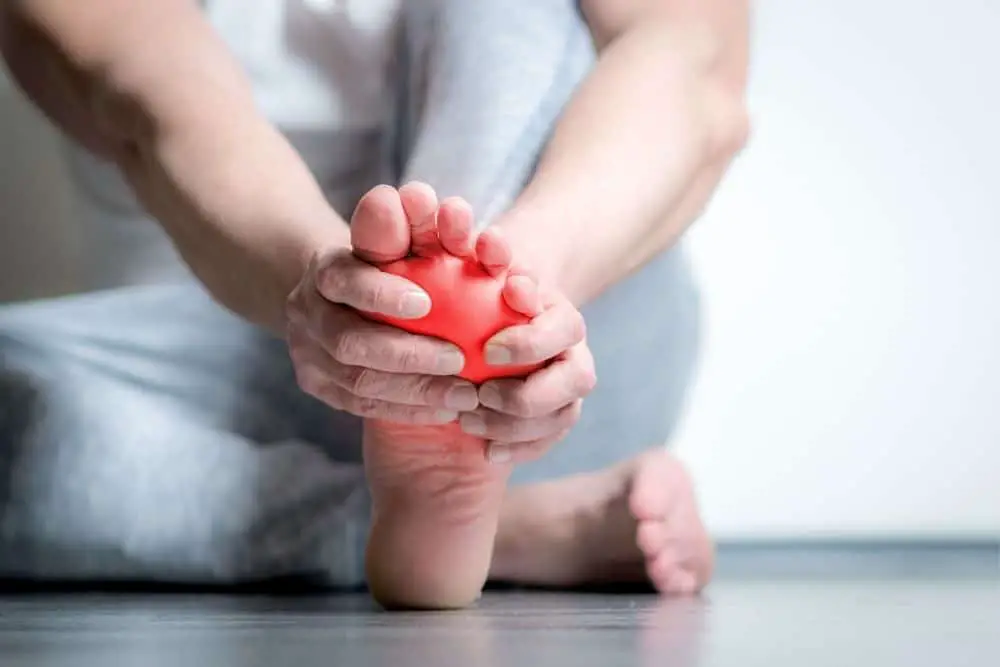
If you notice parts of your skin have become red or tender, you should immediately do something about this. This is why you need to have first aid on the go with you.
You can tape the hot spots with surgeon’s tape, for example, blister bandages, Band-Aids, moleskin, or apply foot powder. This will help prevent the hot spots from escalating into something worse.
Pro
- Prevents hot spots from transforming into blisters.
10. Carry extra socks with you on the trail
- Merino Wool for comfortable & dry feet: Our wool hiking socks have thermoregulating merino wool and...
- Support for your comfort: Our hiking boot socks feature targeted cushioning to reduce the risk of...
- Designed in Denmark: Our womens and mens hiking socks are designed with Everest mountaineer Rasmus...
Last update on 2023-11-11 / Affiliate links / Images from Amazon Product Advertising API
You should always carry an extra pair of socks with you whenever you go on a hike. This is for situations where the socks you wear become unavoidably wet on the trail.
You should not keep hiking in wet socks, or you put your feet at risk of blisters on the trail. Extra socks are necessary, so always keep moisture-wicking and breathable socks in your hiking bag.
Pros
- Helps maintain dry feet
Con
- Contributes to extra weight in your backpack.
Conclusion
Blisters can make hiking uncomfortable and can make your feet feel miserable afterward, and this is due to friction, moisture, and pressure in hiking boots. Of course, blisters are treatable, but preventing them is better, and there are multiple ways you can do that.
On and off the trail, your foot health is important, so you have to keep everything we discussed in this article in mind. Therefore, when buying your hiking boots, pay close attention to details, and make sure you don’t go home with boots that are too tight or big for your feet.
After that, you can keep other things in place to prevent blisters from forming in hiking boots.
Have fun hiking!

